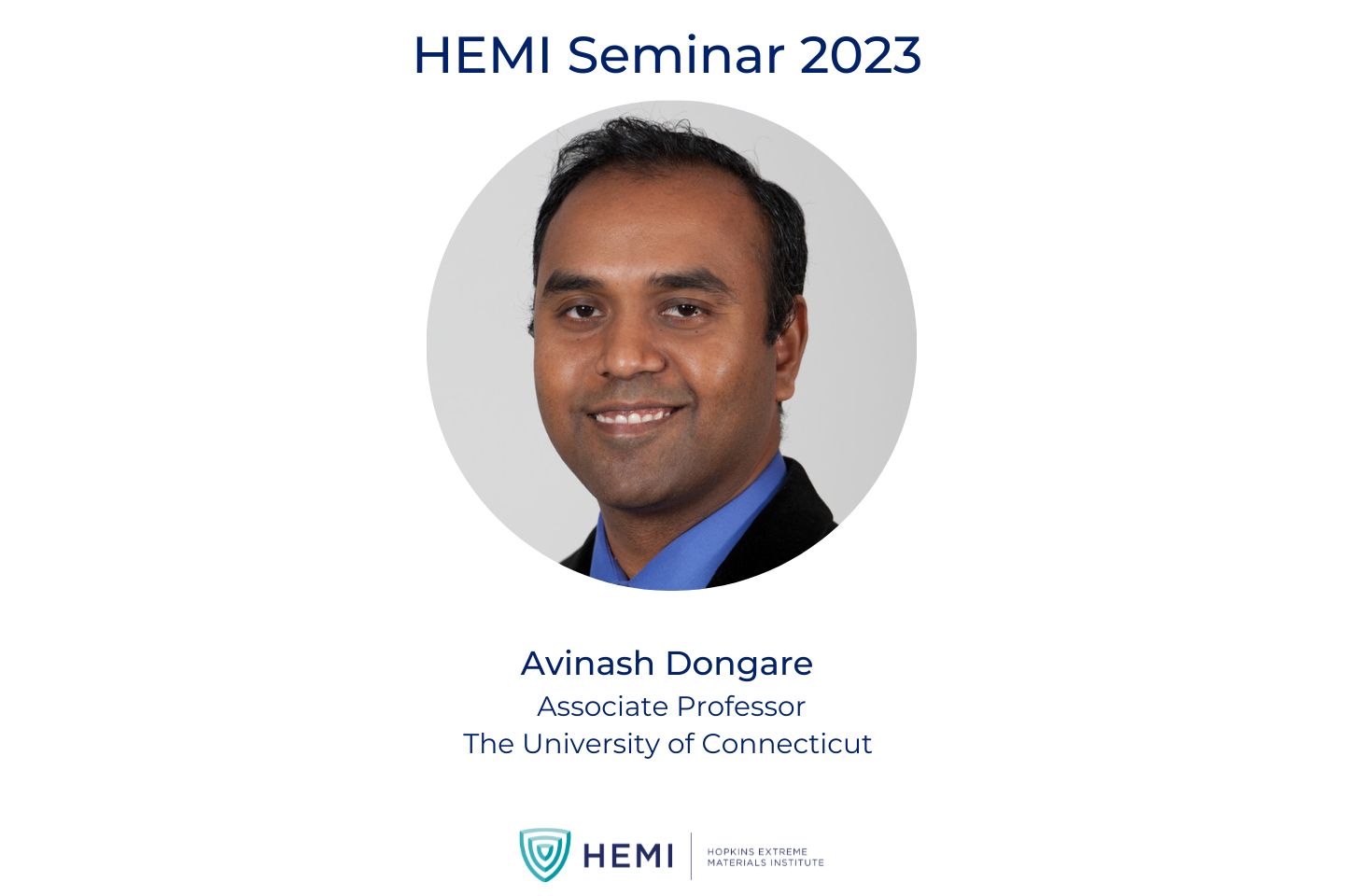February 10, 2023 @ 11:00 am - 12:00 pm

Location: Malone G33
Title: Building a virtual framework to model in situ diffraction experiments of shock loading
Abstract: The dynamic response of metallic materials can involve a complex interplay between dislocation slip, deformation twinning, and phase transformation behavior that determines the shock compression and dynamic failure response. While recent advances allow the characterization of these mechanisms in real-time using in situ diffraction experiments, quantifying the contributions from individual mechanisms is difficult using experiments alone. This talk will discuss the development of a virtual framework to complement the interpretation of the results obtained using in situ shock experiments. Classical molecular dynamics (MD) simulations can unravel the contributions from dislocation slip, deformation twinning, and phase transformation in FCC (Cu), BCC (Ta, and Fe) systems under various stress states generated during shock loading and dynamic failure. Simulated diffraction patterns of deformed microstructures enable a capability to understand the plasticity contributions to peak shifts/splitting/broadening behavior. In addition, we have developed a new virtual texture (VirTex) analysis method to generate simulated EBSD maps and characterize the phase transformation and twinning variant selections during shock compression/release of Fe and Ta systems. VirTex characterization allows the characterization of the damage nucleation mechanisms in Ta microstructures during the spall failure. In addition, a new mesoscale method, quasi-coarse-grained dynamics (QCGD), extends the molecular dynamics (MD) simulations to larger length/time scales. QCGD simulations enable the investigation of the mechanisms of shock wave interactions with pre-existing voids in single-crystal Ta microstructures for variations in shock pressures, void size, and loading orientations. The QCGD simulations retain the atomistic plasticity mechanisms and phase/twin variant selection pathways during the shock-induced transformation in Fe systems predicted by MD simulations. The QCGD method combined with virtual diffraction and VirTex characterization provides a virtual framework to model in situ shock experiments and characterize the plasticity contributions from slip, twinning, and phase transformation behavior in Fe microstructures at the experimental time and length scales.
Biography: Avinash M. Dongare is an Associate Professor in the Department of Materials Science and Engineering at the University of Connecticut. He received his Ph.D. in Materials Science and Engineering from the University of Virginia in January 2008. He carried out postdoctoral research through the National Research Council (NRC) Research Associateship Award from the US Army Research Office and as a Senior Research Associate at North Carolina State University before joining the University of Connecticut as an Assistant Professor in August 2012. Avinash has been the recipient of the 2015 Young Leaders Professional Development Award from The Minerals, Metals, and Materials Society (TMS) and the 2015 National Science Foundation’s (NSF) Faculty Early Career Development (CAREER) Award. Avinash is currently a Co-PIs of a DOE NNSA Center of Research Excellence on Dynamic Deformation of Solids (CREDDS) led by Texas A&M University.




